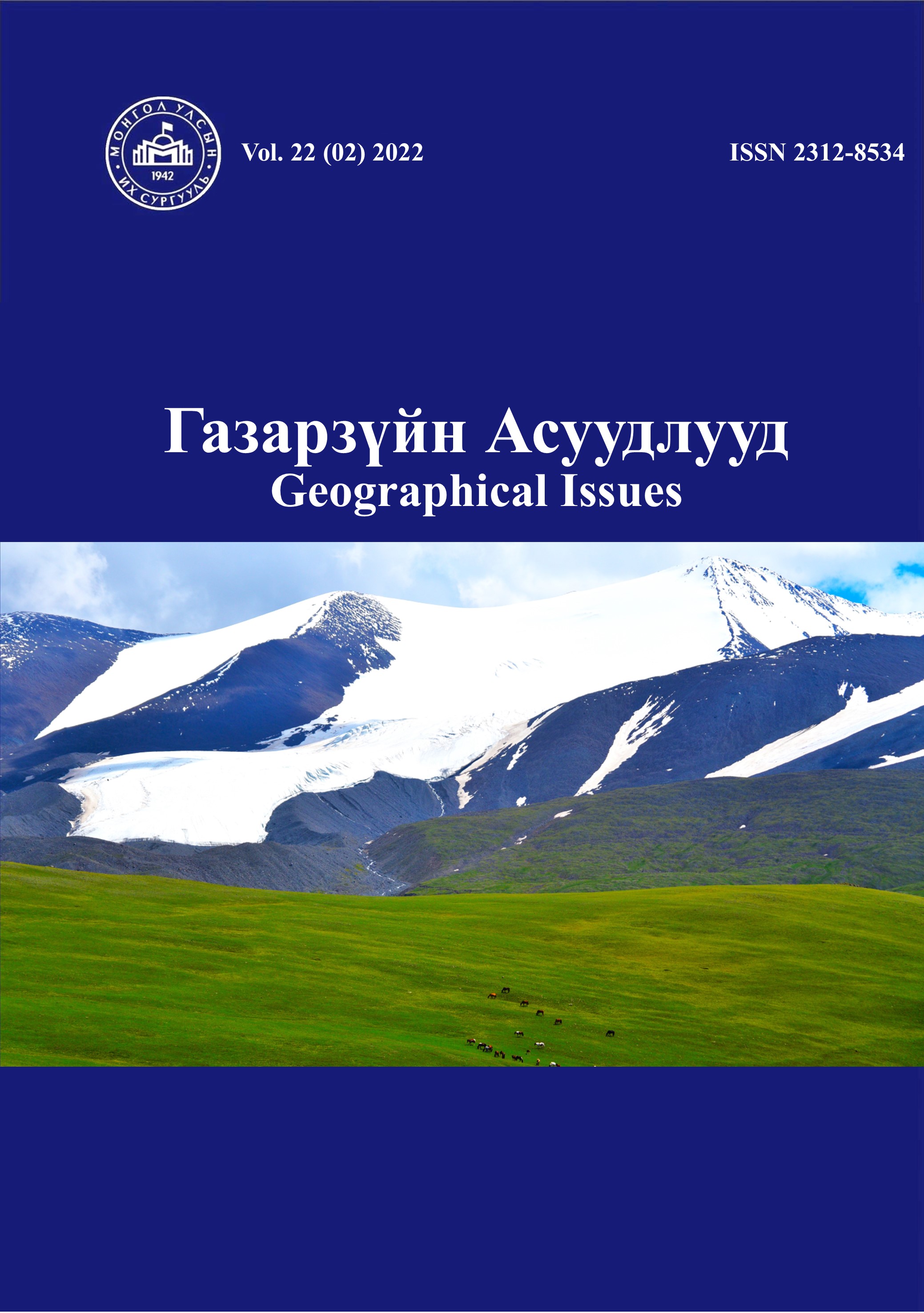Problems of engineering geomorphology in the settlement zone of the Eg River valley: A case study of Aufeis in Erdenebulgan Soum, Khuvsgul Province, Mongolia
Эгийн голын хөндийн суурьшлын бүсийн инженер геоморфологийн тулгамдсан асуудал: Эрдэнэбулган сумын төвийн халианы жишээн дээр
Keywords:
Aufeis, Erdenebulgan Soum, Permafrost, Settlement area, Eg River, Engineering geomorphology, Normalized Difference Snow Index (NDSI), Snow Water Index (SWI)Abstract
Aufeis formation in the winter season in settlements located in continuous, discontinuous, and isolated permafrost regions of Mongolia has become one of the urgent problems that must be solved in the settlement areas. In this study, the reasons for the formation of Aufeis in the settlement area of Erdenebulgan Soum, Khuvsgul Province, located in the Eg River valley, were clarified. In addition to the analysis of geomorphology and permafrost survey materials, the research was based on satellite image data and calculated using the methods of normalized snow index (NDSI) and snow water index (SWI). In the Eg River valley, the normative depth of seasonal freezing and thawing of subsoil ranges from 2.2-3.7 meters. Depending on the freezing of the winter season, there were long, short, and straight rows of cracks and fractures in the vicinity of river diversions, floodplains, terraces, or along the settlement zone. Over the past 10 years, the average size of the Aufeis area was 5555.8 m², and the average Aufeis volume was 5000.2 m³. In 2022, the Aufeis area increased sharply to 6,381.3 m², which can be related to that year's precipitation and soil temperature fluctuations. According to the area and volume classification of Aufeis in Mongolia, the research area belongs to the III class of medium-sized category, but it is exposed to the space of Aufeis distribution due to the improper expansion of the settlement area and wrong planning. According to the changes in the satellite map over the last 30 years, the diversion of the Eg River has caused the spatial distribution of the Aufeis to move towards the settlement area. This study is important for the planning of the spatial location of towns to determine the methods of pre-research and prevention of permafrost-related phenomena and engineering geomorphological problems.
Downloads
Downloads
Published
How to Cite
Issue
Section
License
Copyright (c) 2022 Geographical Issues

This work is licensed under a Creative Commons Attribution-NonCommercial-ShareAlike 4.0 International License.






